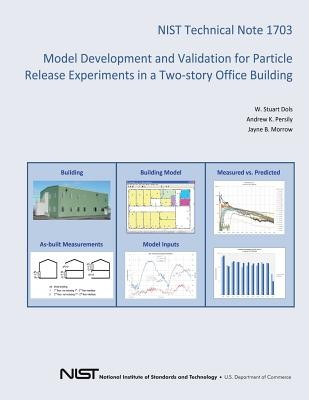
- We will send in 10–14 business days.
- Author: U S Department of Commerce
- Publisher: CreateSpace Independent Publishing Platform
- Year: 2014
- Pages: 98
- ISBN-10: 1496005368
- ISBN-13: 9781496005366
- Format: 21.6 x 28 x 0.5 cm, softcover
- Language: English
- SAVE -10% with code: EXTRA
Reviews
Description
Whole-building airflow and contaminant transport modeling has a potentially important role in the development of contaminant sampling strategies in response to the airborne release of chemical or biological agents. The effectiveness of these strategies relies on the ability of the selected sampling locations to adequately characterize the levels of contamination throughout an exposed facility to a desired level of confidence in the sampled results. The Department of Homeland Security has sponsored a series of multi-agency exercises, during which contamination experiments were performed to gauge the confidence that could be obtained by various sampling strategies as well as the effectiveness of various sampling methods in a realworld setting. These experiments are very resource intensive and time-consuming, limiting the number of experiments that can be reasonably performed. Building simulation can be used to perform virtual experiments that would allow more tests to be performed under a much larger set of building operational and environmental configurations. However, in order for the simulations to be useful, the building models need to provide realistic results with a high level of confidence. The purpose of this report is to describe a simulation validation effort based on measurements of contaminant levels performed during the aforementioned exercises.
EXTRA 10 % discount with code: EXTRA
The promotion ends in 19d.16:04:48
The discount code is valid when purchasing from 10 €. Discounts do not stack.
- Author: U S Department of Commerce
- Publisher: CreateSpace Independent Publishing Platform
- Year: 2014
- Pages: 98
- ISBN-10: 1496005368
- ISBN-13: 9781496005366
- Format: 21.6 x 28 x 0.5 cm, softcover
- Language: English English
Whole-building airflow and contaminant transport modeling has a potentially important role in the development of contaminant sampling strategies in response to the airborne release of chemical or biological agents. The effectiveness of these strategies relies on the ability of the selected sampling locations to adequately characterize the levels of contamination throughout an exposed facility to a desired level of confidence in the sampled results. The Department of Homeland Security has sponsored a series of multi-agency exercises, during which contamination experiments were performed to gauge the confidence that could be obtained by various sampling strategies as well as the effectiveness of various sampling methods in a realworld setting. These experiments are very resource intensive and time-consuming, limiting the number of experiments that can be reasonably performed. Building simulation can be used to perform virtual experiments that would allow more tests to be performed under a much larger set of building operational and environmental configurations. However, in order for the simulations to be useful, the building models need to provide realistic results with a high level of confidence. The purpose of this report is to describe a simulation validation effort based on measurements of contaminant levels performed during the aforementioned exercises.


Reviews